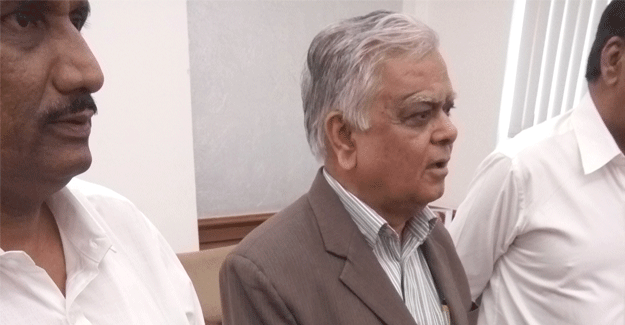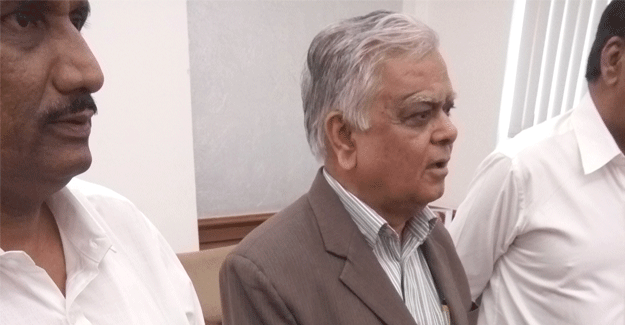
Special Training For Science Communication Can Be A Game Changer In Cotton: Dr. CD Mayee
President Indian Society for Cotton Improvement (ISCI) among a host of other prestigious institutions, Dr. CD Mayee feels strongly that the technology we purchase for our farmers must be properly used according to the protocol prescribed for the technology. In an exclusive electronic interview with Textile Excellence Special Correspondent, Venkatesh Raghavan, he speaks on what exactly ails the cotton framing industry today in India.
What are the advantages of BG3 cotton over BG2 and BG1 that are in the market? At what stage is the approval for BG3 pending?
Let me clarify that in 2002 Bt cotton was permitted in India with one gene, cry1 AC. Subsequently when it was seen that farmers are not adopting any protocol, the inbuilt resistance of cotton was enhanced by supplementing anther gene cry1 AC + cry2 AB. The single gene product was called BG1 and the double gene product was called BG2. BG stands for Bollgard, a proprietary product of Monsanto. Since 2006 the market is full of BG2 only and there are nearly 40 companies that have introduced this Bt in more than 1000 hybrids. The technology was successful in the last 12 years in checking all the 4 bollworms. However, again the refugia adoption was not followed as per the guidelines of using the technology. It has resulted in loss of resistance to pink bollworm. This is so, because this bollworm eats only cotton while others have natural refugis or susceptible crops around and hence do not develop any resistance.
Now the technology supplier began testing the third additional gene called vip3 and the product is BG3. The testing started in 2010 and they found that it may be useful for enhancing the resistance of the current BG2. The country's political atmosphere altered in 2014 with swadeshi movement and there was intense opposition to GM technology in general and BG3 in particular. The local seed companies like NUZIVEDU went to court against the license fee being charged for the technology of BG2. These companies had political mileage which caused the minister to curtail the license fee of MMB from Rs 160 to 49 drastically. In short, this was in disregard of the mutual agreements between the technology provider and the technology user.
MMB saw that the atmosphere was not congenial for bringing any new technology and they withdrew the applications for their final product called BG2 RRFLEX. This was a product which would have served as an excellent herbicide tolerance agent with Bt. Surprisingly it has been declared illegal in Maharashtra and Telangana.
To answer your question on BG3 is at what stage, the reply is that it is dead at present and nobody wants to venture into bringing any new technology. Moreover, they have seen the fate of our indigenous GM mustard, which has been halted by our government in response to the opposition from activists.
Won't the pests develop resistance to BG3 also over a period of time? Just like in antibiotics, the stronger the dosage, more resistant the bacteria and virus get, does the same logic apply here too? What's the gestation period?
Yes. Even if we bring any technology, pests like pink bollworm which are exclusive feeder on a single crop will develop resistance. In fact, technology management is the key issue for prolonging life of any technology. If we adopt all the protocol of technology management, the same BG2 can be effective for 25 years. It has been so in all those countries where Bt cotton was permitted prior to India and still there is no problem because they follow refugia, clean cultivation, proper rotation and destruction of the crop remnants.
My societies ISCI and SABC have developed campaign material for farmers’ education that can be done in this summer. I assure you that the same BG2 shall not attract the pest. So the matter is of proper use of technology. What we witness today is when one feels the cane is sweet they try to eat it with the roots too.
Why can't we adapt natural farming as an alternative where the ecosystem takes care of every worm or pest that comes into play during the crop cycle?
Yes. We too can adopt natural farming if we stabilize our population. We have the task of feeding a nation of 1.3 billion today. We are importing nearly INR 70,000 crore worth edible oil and INR 30,000 crore pulses. I don’t need to give figures of other crops. The examples serve the purpose. We have had natural farming prior to green revolution and you know what happened. People were in queue for hours to get millet and red wheat imported from US under PL480 program from 1964-65 till 70.
We cannot afford to lose on production today. Natural farming is a fancy. At this stage we cannot afford it as a nation. Leave farming to farmers. Let us keep our farming cafeteria open and let the farmer take what suits him/her best.
There is a general feeling that the discoveries and research work of scientists like you are not properly communicated to the farmers and people working on the field. What can be done to eliminate this communication gap?
Yes. I agree that science communication is weak in this country where superstition rules the minds. Particularly, farmers are still ignorant on technology and we have failed through our extension system to educate them on science. The problem lies in our communication system. I often say that our scientists are scientists among farmers and they behave like farmers in a scientific community. They need to know the language of communication to farmers. I often say that if I cannot tell my mother what I do in the name of science and research, it is not worth doing. So science communication is a skill and we need some special training for this.

Textile Excellence
If you wish to Subscribe to Textile Excellence Print Edition, kindly fill in the below form and we shall get back to you with details.








